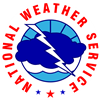Overview
|
Mid-afternoon on August 13th, a supercell spawned a tornado southeast of Ramah. The tornado lasted from 4:16 p.m. to 4:25 p.m. and the path length was approximately 1 1/3 miles. The tornado damage rating was EF1. Storm Chasers Dann Cianca and Michael Carlson were on the storm and took photographs and video of the developing storm. They also conducted a damage survey of the area. Many thanks to Dann and Michael. |
 Tornado Track |
Photos & Video:
 |
 |
 |
 |
| Mesocyclone Captured by Dann Cianca | The Tornado Captured by Dann Cianca | Damage to a Barn Captured by Dann Cianca | Fence Damage Captured by Dann Cianca |
Radar:
 |
| Radar Base Reflectivity and Base Velocity Volume Scans of the Tornadic Event |
Environment
There are three main circulations that can be seen in the SPC upper air maps, two upper level lows, one located over Quebec and the other located over Saskatchewan and Manitoba, and a upper-level ridge located over the majority of the western United States. The ridge built over the western U.S. and the low over Saskatchewan and Manitoba provided northwesterly to west-northwesterly flow over southeastern Colorado. The surface flow, though, was from east-southeast. The surface southeasterly flow did two things for the environment, the first was that it provides a wind sheared environment, conducive for supercell thunderstorms to form, and second, provided low level moisture, with moisture originating from the Gulf of America. The 700-hPa analysis shows a shortwave trough over the region, which formed into a lee trough, underwent lee-cyclogenesis, creating a boundary in which thunderstorms could initiate over. Once the thunderstorm developed over northern El Paso County, a rogue southwesterly propagating outflow boundary originating from a supercell over the eastern Colorado plains, interacted with it, enhancing the low-level shear. The low level shear was strong enough to produce tornadogenesis.
Archived SPC Day 1 Outlook for August 13th, 2008
 |
| Archived Day 1 SPC Outlook |
August 13th, 2008 at 6:00 AM MDT
 |
 |
 |
| Surface Analysis | 850-hPa Analysis | 700-hPa Analysis |
 |
 |
| 500-hPa Analysis | 300-hPa Analysis |
August 13th, 2008 at 6:00 PM MDT
 |
 |
 |
| Surface Analysis | 850-hPa Analysi | Figure 3: Caption |
 |
 |
| 500-hPa Analysis | 300-hPa Analysis |
Thermodynamic Profiles of the Atmosphere (Skew T Log P Diagram)
August 13th, 2008 at 6:00 AM MDT
 |
 |
| KDNR Sounding | KDDC Sounding |
August 13th, 2008 at 6:00 PM MDT
 |
 |
| KDNR Sounding | KDDC Sounding |
 |
Media use of NWS Web News Stories is encouraged! Please acknowledge the NWS as the source of any news information accessed from this site. |
 |